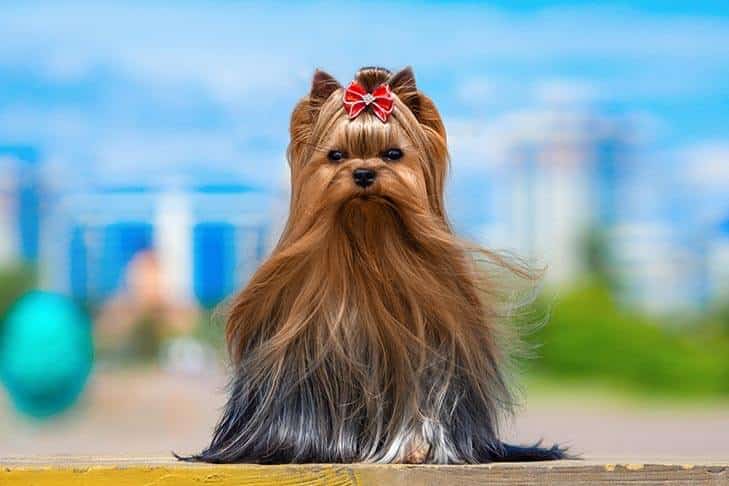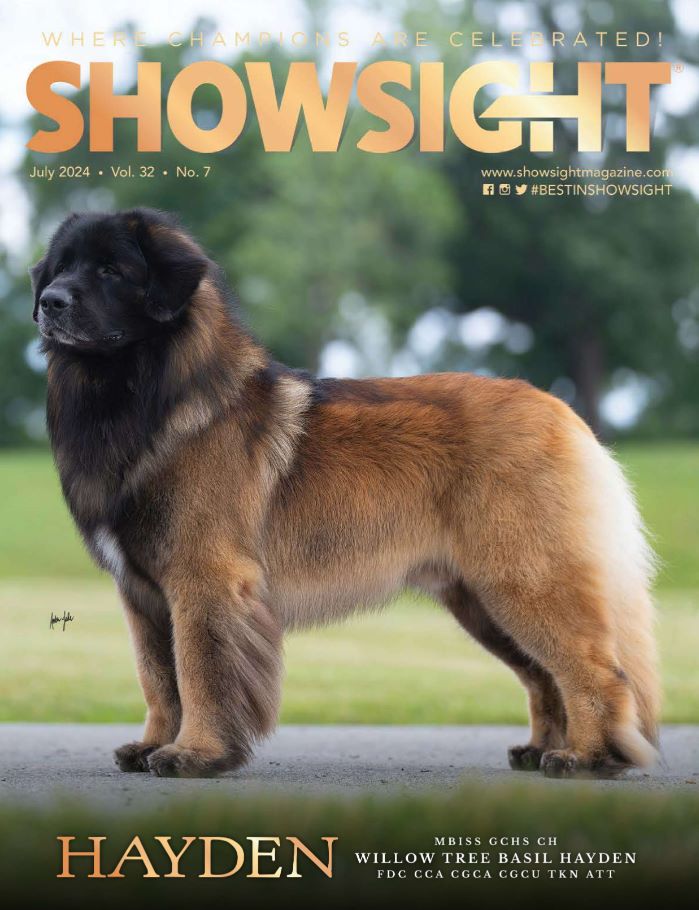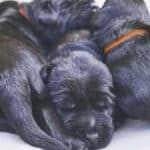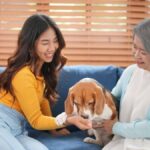The correct presentation of the Yorkshire Terrier breed is of utmost importance. Not only the immaculate grooming of dog and handler, but also the ring training and presentation of both are crucial. This article gives some of my thoughts on the subject, which might be helpful to you.
Purebred Yorkshire Terrier Presentation – THE DAY BEFORE THE SHOW: At home, we have to take our dog(s) out of oil-shampoo, condition and dry. I always dry from the part down the back first, then the sides and feet, leaving head fall, face, and front of neck until last. Wrap, if it is a dog you usually wrap. Next, check the tack box, making sure you have everything you will need: lead, brush, comb, spray bottle, bows, towels, bait, etc. Prepare the dog crate.
Purebred Yorkshire Terrier Presentation – CLOTHES – COLORS AND STYLE: Carefully select your own wardrobe. Remember, this is a dog show, not a cocktail party. (That’s later!) Much thought should be given to this subject. Do not try to out-dress the judge. If he or she is a conservative dresser, you may turn him or her off with too flamboyant an outfit. “Slightly understate, rather than overstate,” is the rule here. Shoes MUST be comfortable and supportive.
Purebred Yorkshire Terrier Presentation – DAY OF THE SHOW: Leave the house or motel in time to arrive at the showgrounds two hours prior to your scheduled ring time. Allow an hour per dog for grooming. You should park the car and set up as close to the ring as possible. Do allow yourself plenty of time. Most judges work at the rate of two minutes per dog, some allow three minutes. Here again, allow sufficient time to arrive at ringside unflustered. Pick up you armband and wait for the steward to call your class.
Once in the ring, place yourself and your dog in the most advantageous position—it is not necessary to be first in line. If your dog is not a fast mover or is bothered by other dogs behind him, he is going to look incredibly bad while moving or turning to look at the dog following him. With a slow dog, the end or middle of the line is the best place. A fast-moving dog, of course, is going to look its best up front.
When setting up your dog, stay in line. There is nothing more novice-looking or annoying to a judge than an exhibitor upstaging another exhibitor and ending up in the middle of the ring. The same goes for moving with the group. DO NOT run up anyone’s rear and do not let it happen to you. Check the judging procedure and the gaiting pattern being used, and in which direction to face the dog on the table. Position your dog as the judge has indicated, check his topline, straighten the coat, if necessary, and use your bait to have the dog ready in his best pose for the judge’s first impression.
When setting up your dog, stay in line. There is nothing more novice-looking or annoying to a judge than an exhibitor upstaging another exhibitor and ending up in the middle of the ring.
On the ground, allow enough room between yourself and the other exhibitors to work. Pose your dog, straighten his coat, and bait him to work his ears. Draw attention to your dog’s good points and hide the bad. By this I mean that if he has a good topline but an excellent head, then a 45-degree angle toward the judge will help a lot to draw attention away from the topline. Good neck and legs can be accentuated by subtle hand gestures.
The handler’s body posture plays an important part in the ring and is something that you will have to learn to “play by ear,” according to what you “read” from the judge’s body language. For instance, a judge with an aggressive body pose is going to be subconsciously turned off by you if your body language is also aggressive. Similarly, a passive pose is going to turn off the passive-type judge. So act accordingly.
Good luck in the ring, and remember to be a good sport.
(A version of this article originally appeared in the YTCA Heritage,
1970 through 1983, which was published and copyrighted by the YTCA in 1985.)








